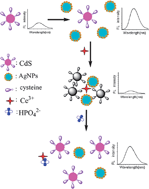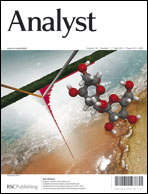Novel switchable sensor for phosphate based on the distance-dependant fluorescence coupling of cysteine-capped cadmium sulfidequantum dots and silver nanoparticles†
Abstract
A novel switchable sensor was developed for the determination of phosphate based on Ce3+ induced aggregation and phosphate triggered disaggregation of


 Please wait while we load your content...
Please wait while we load your content...